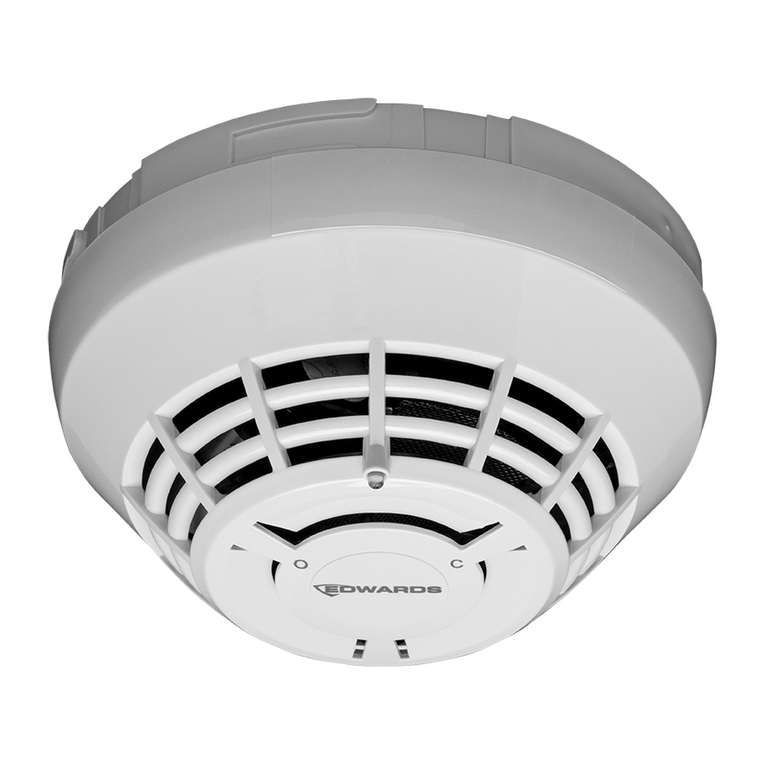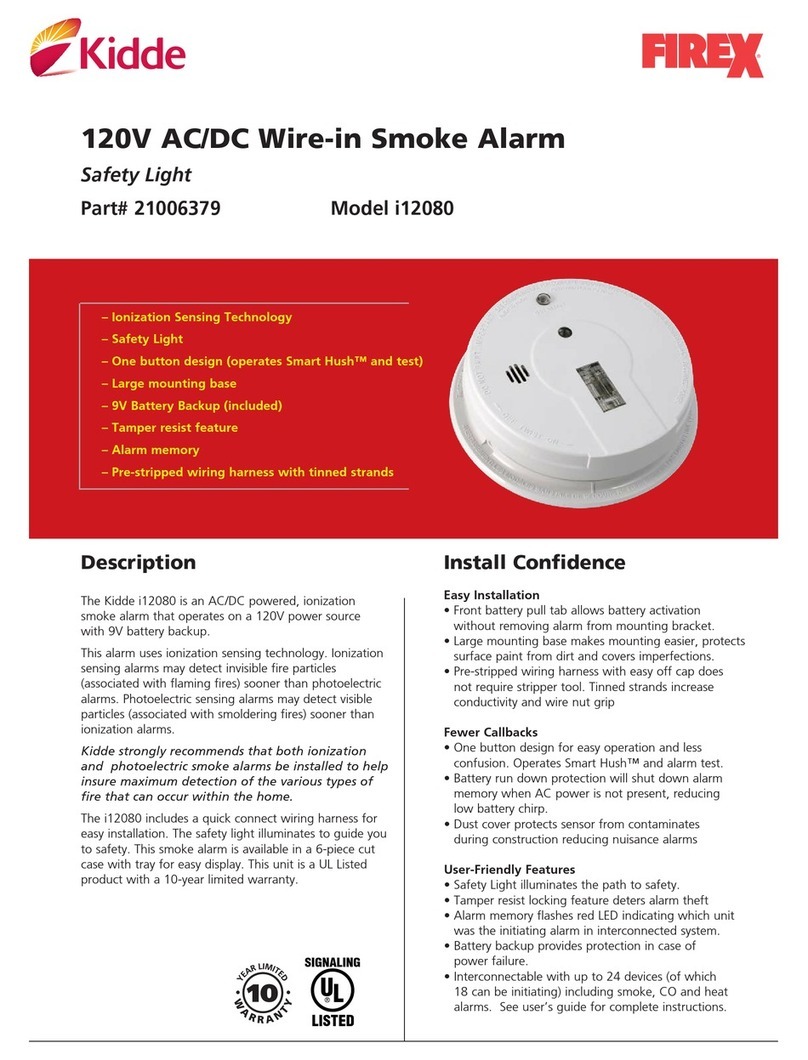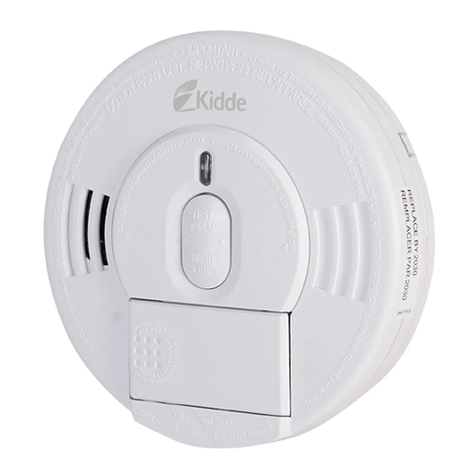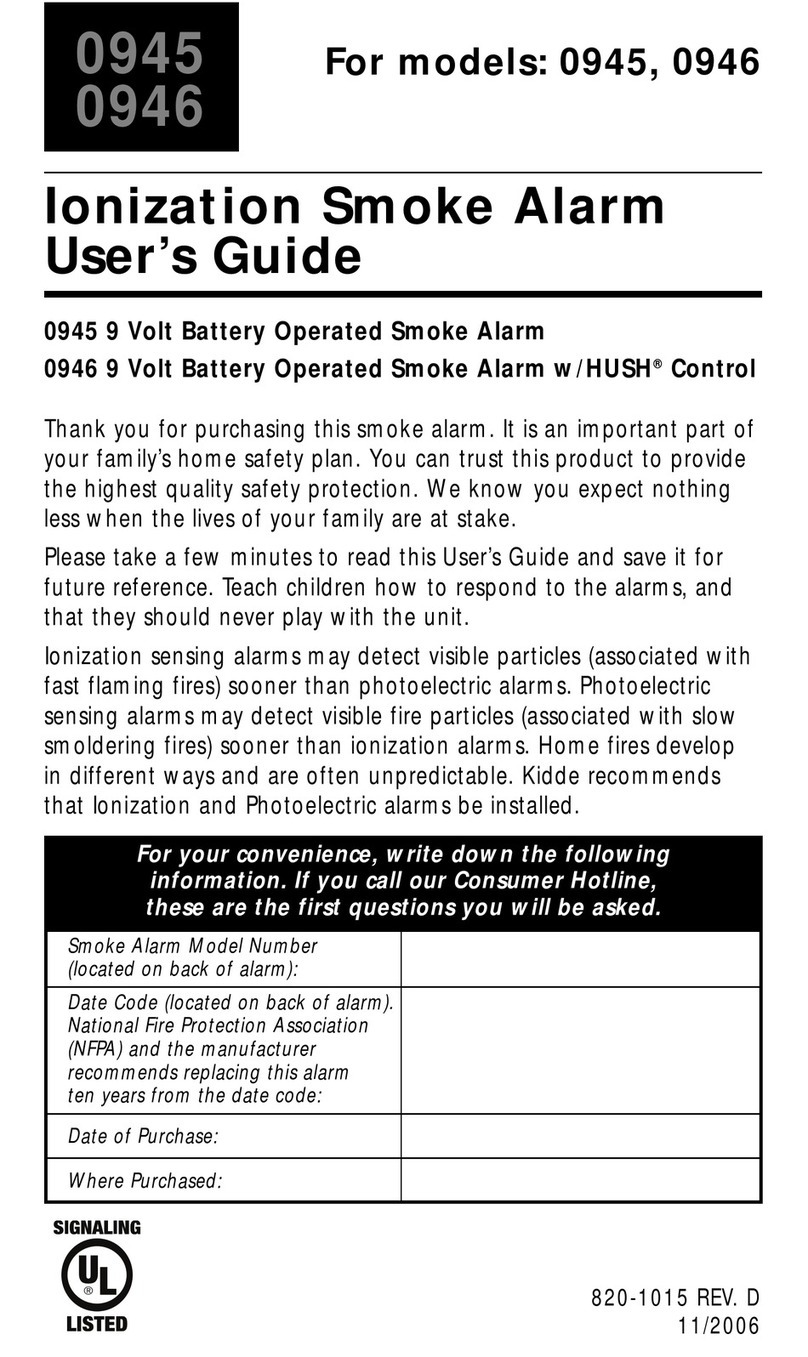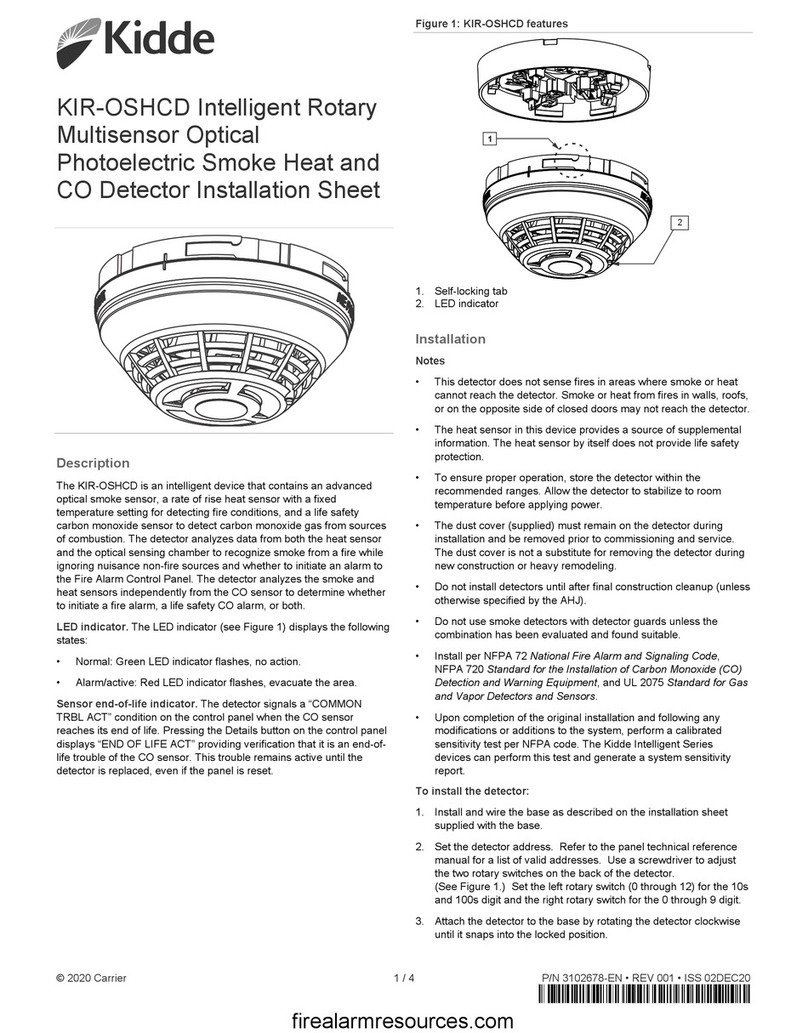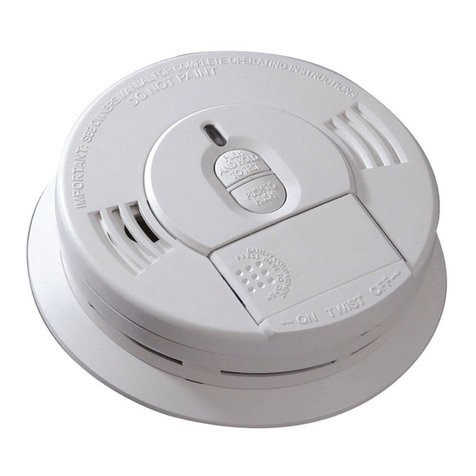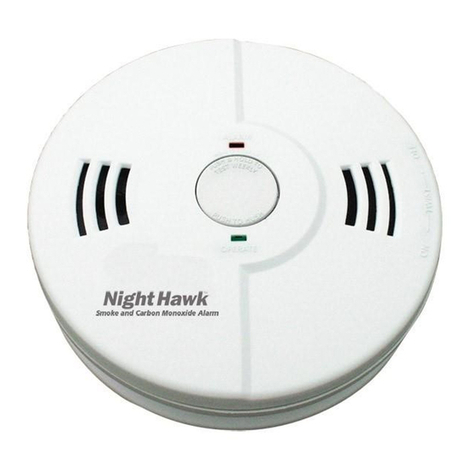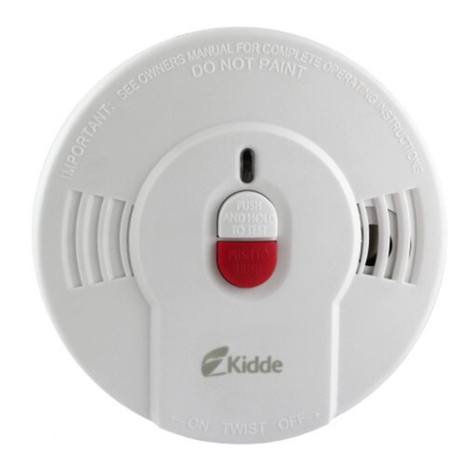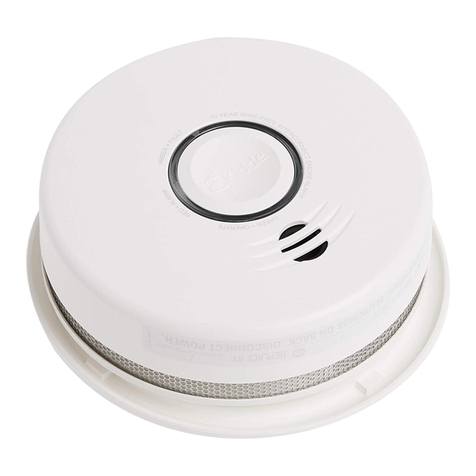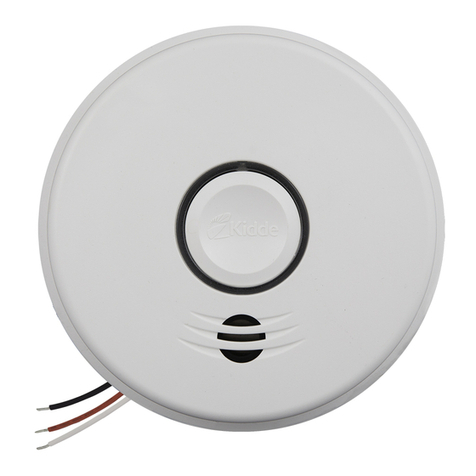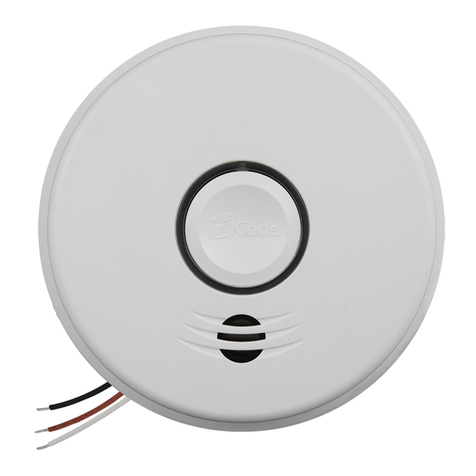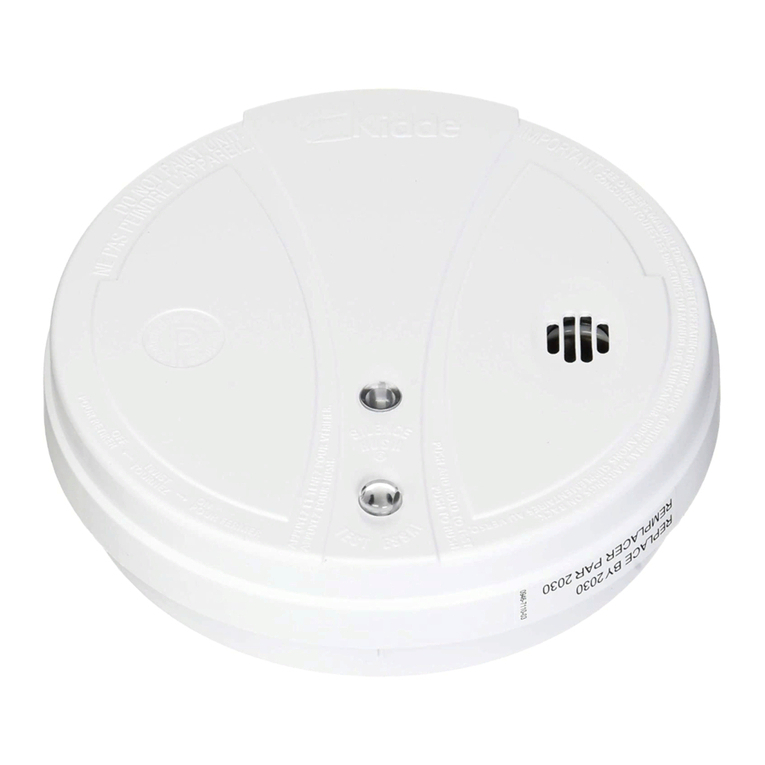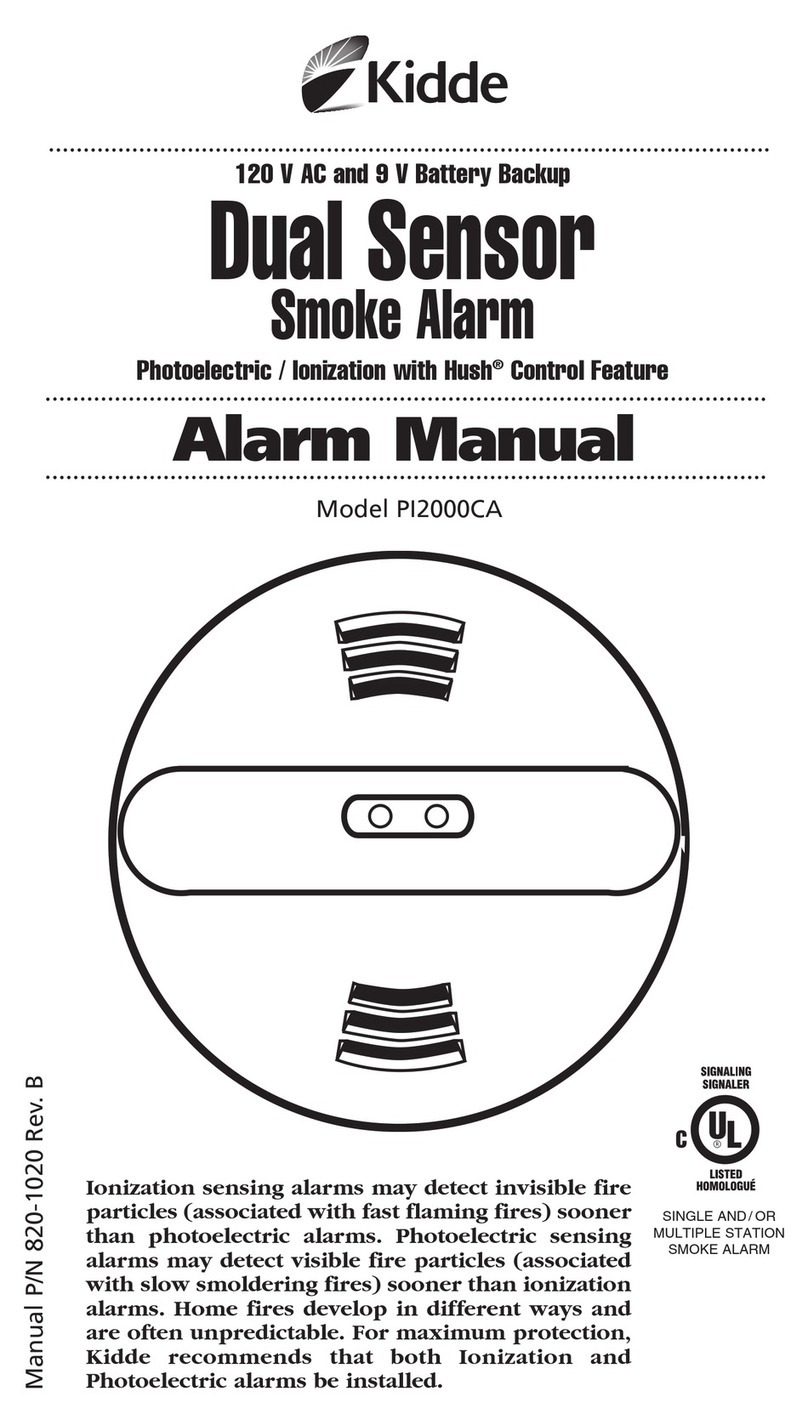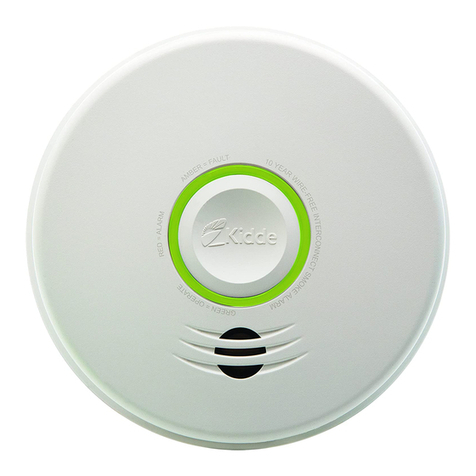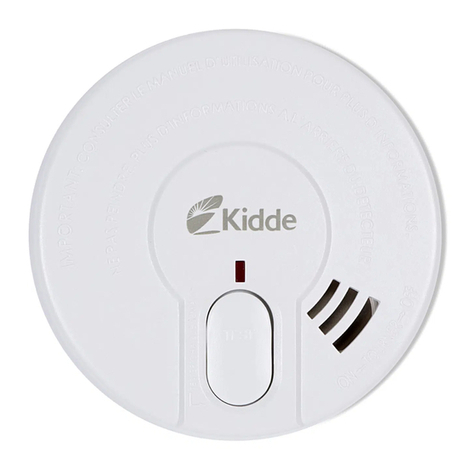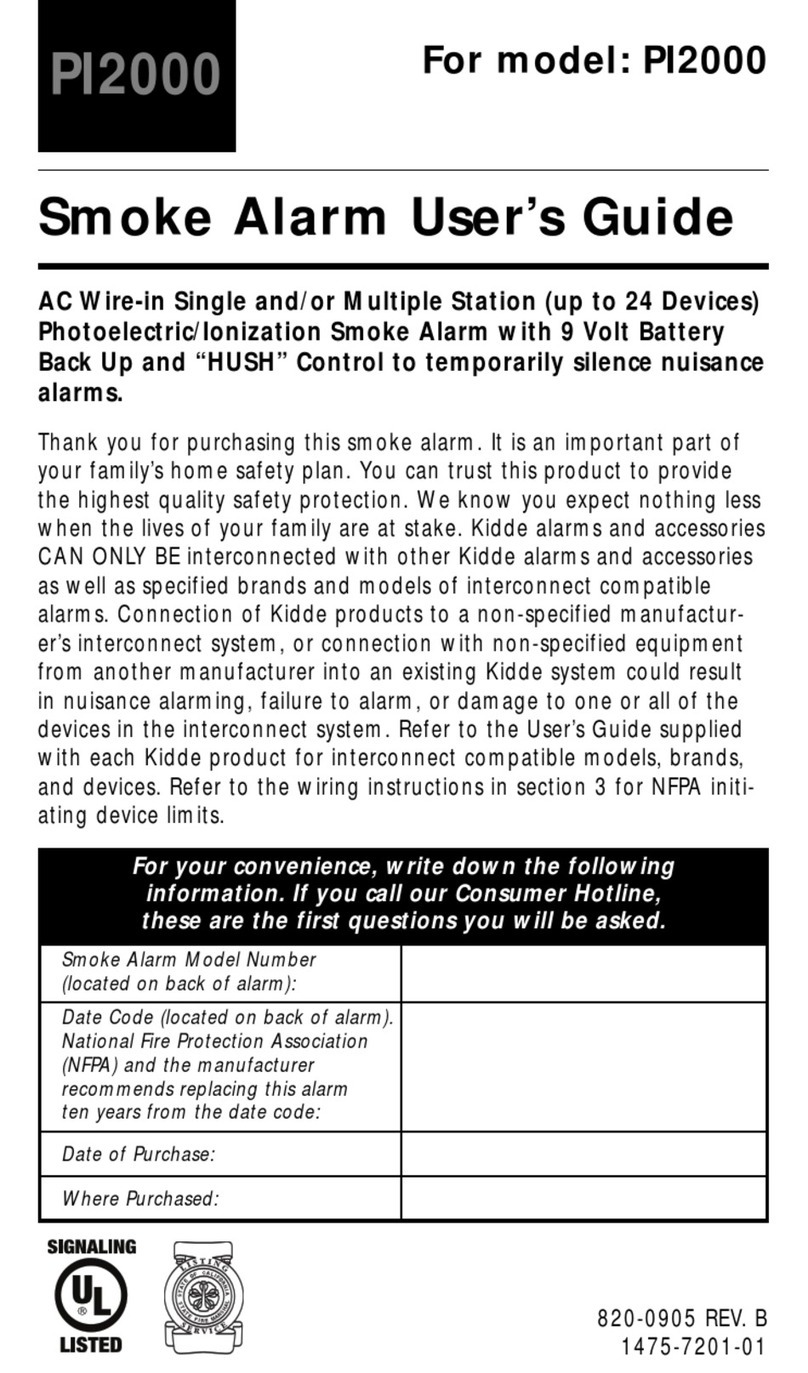10
13. Limitations of Smoke/Heat Alarms
Fire-warning equipment for residential occupancies are capable of protecting about half of the
occupants in potentially fatal fires. Victims are often intimate with the fire, too old or too young,
or physically or mentally impaired such that they cannot escape even when warned early
enough that escape should be possible. For these people, other strategies such as protection-
in-place or assisted escape or rescue would be necessary.
If the alarm is located outside the sleeping room or on a different floor, it may not wake up a
sound sleeper.
The use of alcohol or drugs may also impair one’s ability to hear the smoke alarm. For
maximum protection, a smoke alarm should be installed in each sleeping area on every level
of a home.
Warning! Smoke alarms are devices that can provide early warning of possible fires at a
reasonable cost; however, alarms have sensing limitations. Ionisation sensing alarms may
detect invisible fire particles (associated with fast flaming fires) sooner than photoelectric
alarms. Photoelectric sensing alarms may detect visible fire particles (associated with slow
smoldering fires) sooner than ionisation alarms. Home fires develop in different ways and are
often unpredictable. For maximum protection, Kidde recommends that both Ionisation and
Photoelectric alarms be installed.
Heat alarms are useful in areas with condensation/dust/high humidity, such as kitchens and
lofts. Heat alarms MUST ALWAYS be interconnected to smoke alarms.
Heat alarms are triggered when a temperature of 57ºC is reached - they are not suitable for use
as a fire safety device independendently, they must always be used in conjunction and
interconnected to smoke alarms.
Loose batteries, where fitted must be of the specified type, in good condition and installed
properly
AC only powered alarms will not operate if AC power has been cut off such as by an electrical
fire, an open fuse or loss of mains supply.
All alarms must be tested regularly to make sure the batteries and the alarm circuits are in
good operating condition.
Life safety from fire in residential occupancies is based primarily on early notification to
occupants of the need to escape, followed by the appropriate egress actions by those
occupants. Fire warning systems for dwelling units are capable of protecting about half of the
occupants in potentially fatal fires. Victims can be involved with the fire, too old or young, or
physically or mentally impaired such that they cannot escape even when warned early enough
that escape should be possible. For these people, other strategies such as protection-in-place
or assisted escape or rescue are necessary.
Smoke alarms cannot provide an alarm if smoke does not reach the unit. Therefore, smoke
alarms may not sense fires starting in chimneys, walls, on roofs, on the other side of a closed
door or on a different floor. If the alarm is located outside the bedroom or on a different floor,
it may not wake up a sound sleeper. Equally heat alarms will only be triggered if they are
correctly sited to detect heat. The use of alcohol or drugs may also impair ones ability to hear
the alarm. For maximum protection a smoke alarm should be installed in each sleeping area on
every level of a home. Hearing impaired occupier should consider fitting additional strobe
accessories to give a visual alarm.
Although smoke/heat alarms can help save lives by providing an early warning of a fire, they
are not a substitute for an insurance policy. Home owners and renters should have adequate
insurance to protect their property.
Fire-warning equipment for residential occupancies are capable of protecting about half of the
occupants in potentially fatal fires. Victims are often intimate with the fire, too old or too young,
or physically or mentally impaired such that they cannot escape even when warned early
enough that escape should be possible. For these people, other strategies such as protection-
in-place or assisted escape or rescue would be necessary. If the alarm is located outside the
sleeping room or on a different floor, it may not wake up a sound sleeper.
The use of alcohol or drugs may also impair one’s ability to hear the smoke alarm. For
maximum protection, a smoke alarm should be installed in each sleeping area on every level
of a home.
If after reviewing this manual you feel that your smoke alarm is defective in any way, do not
tamper with the unit. Refer to Section 14. Contact your Installer, Wholesale Distributor or
Landlord.
Guarantee
Kidde Fyrnetics guarantees to you as a purchaser that the enclosed smoke alarm will be
free of defects in material, workmanship or design under normal use and service for a
period of 6 years, excluding any loose batery supplied. This extends to 10 years on Hard
Wired Rechargeable/Long Life, products (from the date of installation) including the back
up battery/powercell.
14. Service and Guarantee
1235-7222-05_R5.qxd:_ 2009.6.10 9:46 AM Page 9
